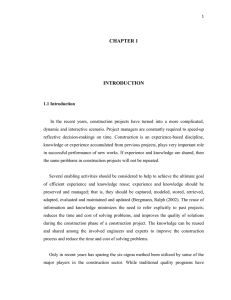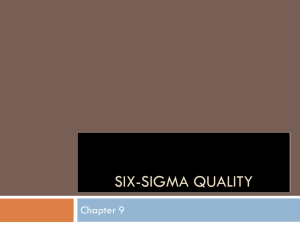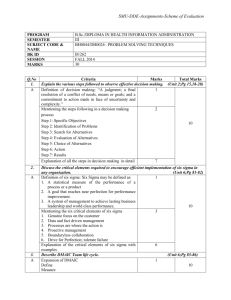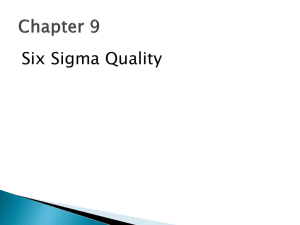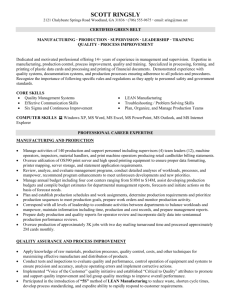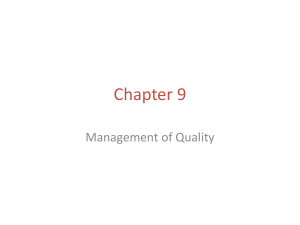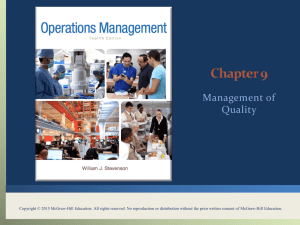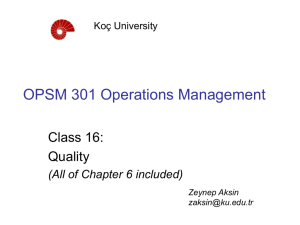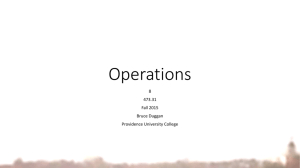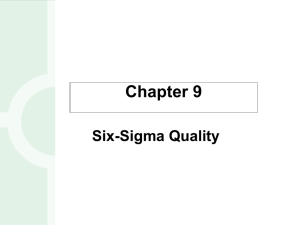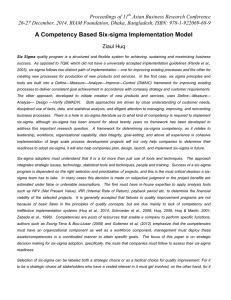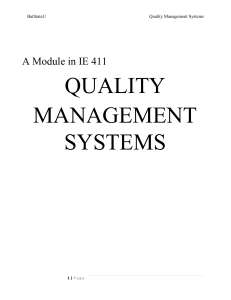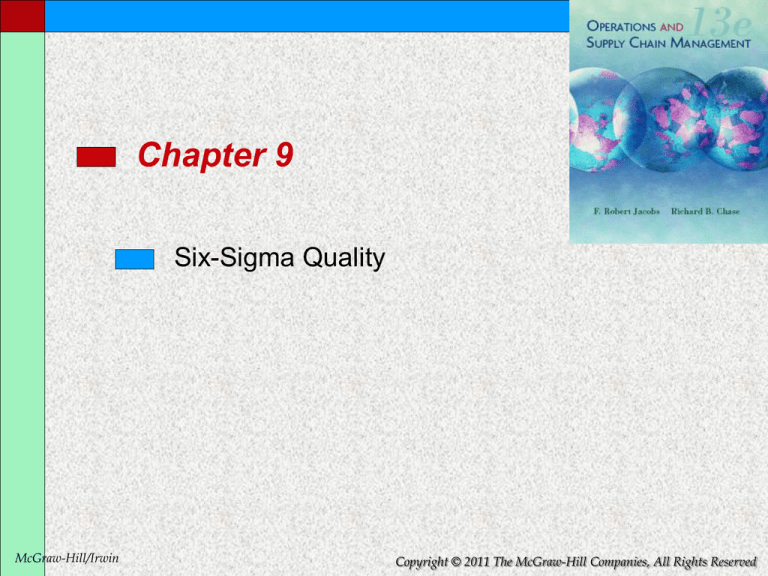
Chapter 9
Six-Sigma Quality
McGraw-Hill/Irwin
Copyright © 2011 The McGraw-Hill Companies, All Rights Reserved
Learning Objectives
1. Understand total quality management.
2. Describe how quality is measured and
be aware of the different dimensions
of quality.
3. Explain the define, measure, analyze,
improve, and control (DMAIC) quality
improvement process.
4. Understand what ISO certification
means.
9-2
Key Six Sigma Concepts
• Critical to quality: attributes most important
to the customer
• Defect: failing to deliver what customer wants
• Process capability: what your process can
deliver
• Variation: what customer sees and feels
• Stable operations: ensuring consistent,
predictable processes to improve what the
customer sees and feels
• Design for six-sigma: designing to meet
customer needs and process capability
LO 1
9-3
Total Quality Management (TQM)
•
•
Total quality management:
managing the entire organization so
that it excels on all dimensions of
products and services that are
important to the customer
Two fundamental operational goals:
1. Careful design of the product or service
2. Ensuring that the organization’s systems
can consistently produce the design
LO 1
9-4
Malcolm Baldridge National Quality
Award
• Established in 1987 by Department of
Commerce
• Goal is to help companies review and
structure their quality programs
• Has requirement that suppliers
demonstrate they are measuring and
documenting their quality practices
LO 1
9-5
Quality Specifications and Quality
Costs
• Design quality: inherent value of the
product in the marketplace
• Conformance quality: degree to which
the product or service design
specifications are met
• Quality at the source: the person who
does the work takes responsibility for
making sure it meets specifications
LO 1
9-6
The Dimensions of Design Quality
• Performance: primary product or
service characteristics
• Features: added touches, bells and
whistles, secondary characteristics
• Reliability/durability: consistency of
performance over time
• Serviceability: ease of repair
• Aesthetics: sensory characteristics
• Perceived quality: past performance
and reputation
LO 2
9-7
Cost of Quality
•
Basic cost assumptions
1. Failures are caused
2. Prevention is cheaper
3. Performance can be measured
•
Cost of quality
1.
2.
3.
4.
Appraisal cost
Prevention cost
Internal failure cost
External failure cost
LO 2
9-8
Six-Sigma Quality
• Six-sigma is a philosophy and methods
used to eliminate defects
• Seeks to reduce variation in the
processes
• One metric is defects per million
opportunities (DPMO)
LO 2
9-9
Six-Sigma Methodology
• Uses many of the same statistical tools
as other quality movements
– Used in a systematic project-oriented
fashion through define, measure, analyze,
improve, and control (DMAIC) cycle
• More detailed version of Deming PDCA cycle
• Continuous improvement: seeks
continual improvement in all aspects of
operations
– Also uses scientific method
LO 2
9-10
DMAIC Methodology
1. Define
–
–
–
Identify customers and their priorities
Identify a project
Identify critical-to-quality characteristics
2. Measure
–
–
Determine how to measure the process
Identify key internal processes
3. Analyze
–
–
Determine most likely causes of defects
Understand why key defects are generated
LO 3
9-11
DMAIC Methodology
Continued
4. Improve
– Identify means to remove causes of
defects
– Confirm the key variables
– Identify the maximum acceptance ranges
– Modify process to stay within acceptable
range
5. Control
– Determine how to maintain improvements
– Put tools in place to track key variables
LO 3
9-12
Analytical Tools for Six Sigma and
Continuous Improvement
•
•
•
•
•
•
•
Flowcharts
Run charts
Pareto charts
Checksheets
Cause-and-effect diagrams
Opportunity flow diagrams
Control charts
LO 2
9-13
Six Sigma Roles and
Responsibilities
1. Executive leaders must champion the
process of improvement
2. Corporation-wide training in Six Sigma
concepts and tools
3. Setting stretch objectives for
improvement
4. Continuous reinforcement and
rewards
LO 3
9-14
ISO 9000 and ISO 14000
• Series of standards agreed upon by the
International Organization for
Standardization (ISO)
– Adopted in 1987
– More than 160 countries
• A prerequisite for global competition?
• ISO 9000 an international reference for
quality, ISO 14000 is primarily
concerned with environmental
management
LO 4
9-15

